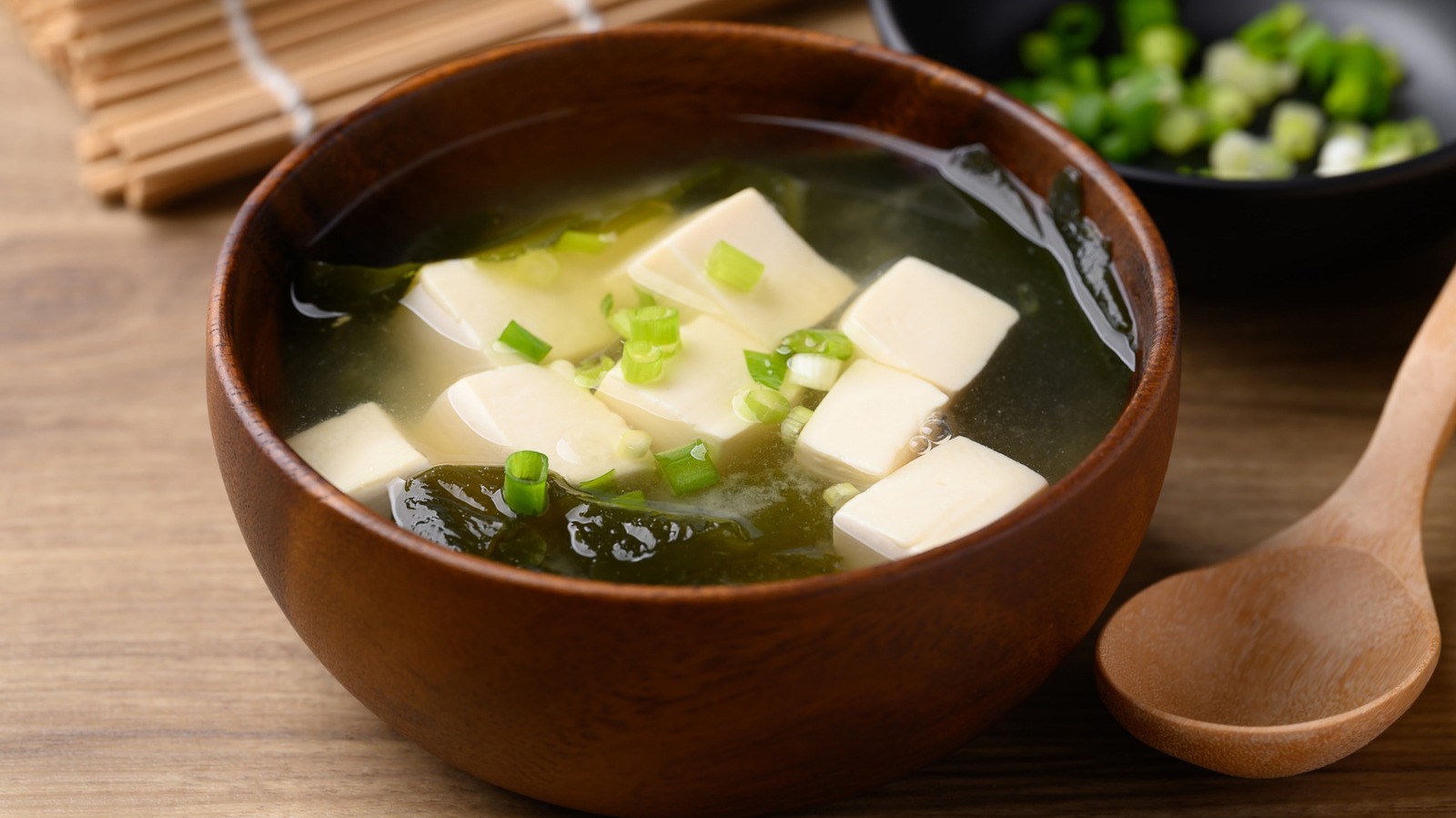We may receive a commission on purchases made from links.
For a soup that is made with so few ingredients, miso soup packs a big flavor punch thanks to the fermented soy bean paste in its name. Along with it’s rich umami flavor, miso soup also carries multiple textures due to the smooth, silky tofu cubes, chewy mushrooms, and crisp, crunchy fresh scallions used to garnish it. While all those ingredients are an important part of the soup, it’s really the seaweed that brings the whole dish together with texture and flavor. Seaweed is the underrated superfood you should be eating more of, and it’s a big factor in what sets homemade miso soup apart from the kind you get in a Japanese restaurant.
To learn more about the best seaweed to use for miso soup, we spoke with Dr. Jae Choi, chef and founder of Yakitori Jinbei, a casual, Asian-inspired restaurant in Smyrna, Georgia, specializing in Korean cuisine with a Japanese twist. Dr. Choi tells us that “the best type of seaweed to use for miso soup is labeled ‘cut wakame’ on the package. It is thinly chopped dried seaweed that is specifically designed for miso soup.” Wakame is considered a Japanese superfood, and is packed with vitamins and minerals. It has a mild flavor, compared to other strong-flavored, salty sea vegetables (also known as seaweed) such as kombu, and is also commonly used in seaweed salads.
Wakame is the best seaweed to use in miso soup
Dr. Choi tells us that the best way to use wakame in a miso soup is not to add it to the soup directly, but rather to “rehydrate the seaweed beforehand and place a small amount into the bowl before pouring the miso soup in.” Rehydrating the cut wakame on its own in room temperature water instead of simply tossing it into a boiling hot pot of soup is a better method of gently adding seaweed to dishes. “It will give a little more texture to the seaweed vs. it becoming too soft if you cook the miso soup with the seaweed,” he says.
When asked if there are any other alternatives to wakame that he’d recommend for using in miso soup, Dr. Choi says “if you try to use another type of seaweed used for sushi preparation, the seaweed would be too thin for the soup and would not work very well.” Thankfully, wakame is fairly easy to find in Korean or Japanese markets, and is also readily available online if you can’t find any in person. Bring this Japanese restaurant staple into your kitchen with our simple miso soup recipe, and make sure to include the Cut Wakame Dried Seaweed that Dr. Choi recommends. If you’re intrigued by the nutritional powerhouse that is seaweed, familiarize yourself with these 10 types of seaweed and how to eat them.






